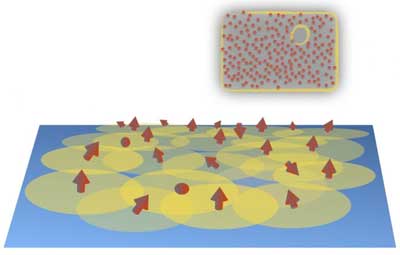
Monday, June 4, 2018
A non-negligible role of supports in atomically dispersed catalysts direct involvement in catalysis
A recent study revealed that, besides serving as ligands to stabilize single-metal atoms, support also provide metal atoms that are vicinal to catalytic metal atoms and can directly participate in the activation of reactants, thus creating a significant vicinal effect for promoting catalysis of an atomically dispersed metal catalyst.
Researchers devise new way to make light interact with matter
Reducing the wavelength of light could allow it to be absorbed or emitted by a semiconductor, study suggests.

AI-based method could speed development of specialized nanoparticles
Neural network could expedite complex physics simulations.

Designer materials with completely random structures might enable quantum computing
Topological randomness may be the answer for lossless electronics and making the nuts and bolts of quantum computers.

Using nanoscale holes in graphene to separate air
Nanoscale holes in graphene can selectively choose which type of air molecules can pass through.

Resolving molecule information in dynamic lipid membrane with metasurfaces
Researchers introduce a mid-infrared biosensor based on a novel multi-resonant metasurface, which, for the first time, is able to distinguish multiple analytes in heterogeneous biological samples non-destructively, in real-time and with high sensitivity.

Beyond conventional solution-processes for 2-D heterostructure
Researchers have demonstrated a facile wet-chemical method to directly grow organic-inorganic hybrid perovskite nanocrystals on surfaces of dispersible MoS2 nanosheets.

New nanoparticles help to detect serious scarring of wounds
Scientists have developed a new way of seeing when heavy wound scars are forming, and providing doctors the chance to intervene.

Peering at atomic structures with no more than pencil and paper
Who would guess that cracking the mystery of how infinitesimally small atoms arrange themselves at the edges of crystals in advanced materials could be as simple as one, two, three?

Subscribe to:
Posts (Atom)

